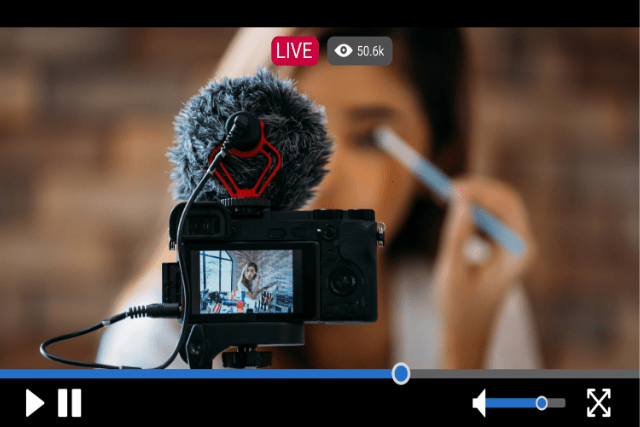You’ve spent hours crafting the perfect video—engaging visuals, crisp audio, and a message that resonates with your audience. But despite all your efforts, your video isn’t getting the traction you hoped for.
The problem? It might not be reaching its full potential in search engine rankings.
Video SEO is the key to unlocking that potential, ensuring that your content not only gets noticed but also drives meaningful traffic and engagement. Ready to transform your video strategy?
Let’s explore the world of Video SEO.
Crafting Videos That Resonate With Audience Search Intent
At the heart of successful Video SEO lies the principle of aligning your content with the search intent of your audience. When your videos address the exact needs and queries of your viewers, they are more likely to gain traction, rank higher, and attract more views.
Conducting Strategic Keyword Research
Compelling video content begins with thorough keyword research. Understanding what your audience is searching for is crucial. Use tools like Google Trends, YouTube’s auto-suggestions, and advanced platforms such as SEMrush or Ahrefs to identify trending keywords in your niche.
For instance, in the wellness sector, you might find high search volumes for phrases like “quick meditation techniques” or “stress relief exercises.” By creating videos on these topics, you tap into an existing demand, enhancing your chances of ranking well on both Google and YouTube.
| Keyword Tool | Purpose | Example Keywords |
|---|---|---|
| Google Trends | Identify trending topics | “Stress relief exercises” |
| YouTube Auto-Suggest | Discover popular searches | “Quick meditation techniques” |
| SEMrush, Ahrefs | Advanced keyword analysis | “Daily mindfulness routines” |
Delivering High-Value Content
Targeting popular keywords isn’t enough; your videos must deliver tangible value. Audiences favor content that provides clear, actionable insights. When crafting your videos, outline your content to ensure it comprehensively addresses the needs of your viewers.
For example, if you’re creating a tutorial on “Stress Relief Exercises You Can Do at Work,” your video should offer concise, easy-to-follow instructions that viewers can implement immediately.
Ensuring Search Engines Index Your Video Content
No matter how valuable your video content is, it won’t yield results if search engines do not index it. Ensuring that your videos are discoverable by search engines is a critical component of Video SEO.
Verifying Indexing Status with Google Search Console
Once you upload your video to platforms like YouTube or embed it on your website, the next step is to check whether search engines index it. Use Google Search Console to enter your video URL in the URL Inspection tool, which will show if your video is indexed and appears in search results.
If your video isn’t indexed, consider submitting a video sitemap to Google. A video sitemap provides search engines with the necessary metadata about your video, facilitating easier indexing and better search visibility.
Regular Monitoring of Indexing Status
Consistently monitor your videos’ indexing status, significantly if you frequently update or add new content. Regular checks ensure that your videos remain visible to your audience and allow you to address any issues promptly.
Optimizing Video Quality for Superior Engagement
The quality of your video content is a pivotal factor in its performance on search engines. High-quality videos are more likely to retain viewer interest, leading to better engagement metrics—key factors in improving your video’s SEO.
Technical Excellence in Video Production
Ensure every technical aspect of your video, from visuals to audio, is of the highest standard. Poor quality can drive viewers away, increasing bounce rates and negatively impacting your video’s SEO. Invest in good lighting, quality microphones, and professional editing to maintain high production values.
For instance, if you’re filming a “Quick Office Yoga” tutorial, ensure that your setting is well-lit and the audio is clear. Close-up shots of yoga poses with clear instructions can make your video more engaging and easier for viewers to follow.
Structuring Content for Maximum Impact
Beyond the technicalities, your content needs to be compelling. A well-structured video will hold the viewer’s attention from start to finish. Start with an engaging introduction, present clear and valuable information, and conclude with a strong closing that reinforces the main points.
Example: Optimized Video Structure
| Section | Content Focus |
|---|---|
| Introduction | Hook the audience, introduce the topic |
| Main Content | Provide detailed, actionable information |
| Conclusion | Summarize key takeaways, call to action |
Enhancing Visibility Through Metadata Optimization
Beyond content creation, optimizing your video’s metadata is crucial for achieving higher search rankings. This includes crafting engaging titles and detailed descriptions and utilizing Schema markup for better indexing.
Crafting Click-Worthy Titles and Descriptions
Your video’s title and description are the first elements both search engines and viewers notice. An optimized title should be concise, engaging, and include your primary keyword. Descriptions should provide a detailed overview of your video, incorporate secondary keywords, and include timestamps for easy navigation.
For example, a video titled “Office Yoga: Quick Stress Relief Exercises” could have a description featuring keywords like “yoga at work,” “desk exercises,” and “stress management tips.”
Utilizing Structured Data for Enhanced Indexing
Implementing structured data or Schema markup helps search engines better understand and index your content, leading to enhanced search visibility and more detailed search snippets. Plugins like Rank Math SEO can automate this process, ensuring your videos are well-optimized.
Boosting Engagement with Attention-Grabbing Thumbnails
Thumbnails play a critical role in attracting clicks to your video. An optimized thumbnail should be visually appealing, relevant to the video content, and designed to stand out amidst the competition.
Designing Thumbnails for Maximum Impact
Use bold, high-contrast colours, and ensure the imagery accurately represents the content of your video. Adding text overlays that highlight the central theme of the video can also increase click-through rates. Tools like Rank Math’s Autogenerate Image feature can help streamline the creation of high-quality thumbnails.
Example: Thumbnail Design Elements
| Element | Description |
|---|---|
| Bold Text | Highlights the key theme |
| High-Contrast Colors | Ensures visibility on various devices |
| Relevant Imagery | Reflects the video content accurately |
Leveraging Transcripts, Captions, and File Name Optimization
Optimizing your video content extends to adding transcripts, captions, and carefully choosing your file names before uploading.
Adding Transcripts and Closed Captions
Including transcripts and closed captions in your videos not only improves accessibility but also provides additional text that search engines can crawl, enhancing your video’s SEO potential. Additionally, captions make your content accessible to viewers who prefer to watch without sound.
Optimizing File Names and Tags
Before uploading, rename your video file with relevant keywords. Instead of generic names like “video_final.mp4,” use something descriptive like “quick-office-yoga-stretches.mp4.” Proper tagging also helps categorize your video, making it easier for search engines to index and rank your content.
Embedding Videos for Enhanced Contextual Relevance
Embedding your videos on relevant webpages is another effective strategy for boosting visibility and engagement.
Contextual Relevance and Internal Linking
Ensure that your videos are embedded on pages that are closely related to the video content. For instance, embedding a video on “SEO Strategies for Small Businesses” within a blog post about “Small Business Marketing Tips” enhances its contextual relevance, improving both user experience and SEO.
Embedding also provides an excellent opportunity for internal linking, guiding visitors to more valuable content on your site and further boosting your site’s SEO performance.
Conclusion
Mastering Video SEO is essential for anyone looking to maximize the impact of their video content. By implementing the strategies outlined in this guide—ranging from keyword research and content alignment to technical optimization and strategic embedding—you can significantly enhance your video’s visibility and engagement on search engines.
Remember, Video SEO is not a one-time effort but a continuous process that requires regular monitoring, updates, and optimization. Stay committed to delivering high-quality content, keep up with the latest SEO trends, and you’ll see your efforts pay off in the form of improved rankings and increased audience engagement.
FAQs
1. What is Video SEO and why is it important?
Video SEO refers to optimizing video content to rank higher in search engine results, making it more discoverable to potential viewers. It’s crucial because higher rankings lead to increased visibility, traffic, and engagement.
2. How does keyword research benefit Video SEO?
Keyword research helps you understand what your target audience is searching for, allowing you to create content that meets their needs and increases your chances of ranking well on search engines.
3. What are the best practices for optimizing video thumbnails?
The best practices include using high-contrast colours, relevant imagery, and bold text to make your thumbnails stand out and attract more clicks.
4. How can I ensure search engines index my video?
To ensure indexing, submit your video sitemap to Google, use Google Search Console to verify indexing, and regularly monitor the status to catch any issues early.
5. Why should I use structured data for my videos?
Structured data helps search engines better understand your content, leading to improved indexing and more detailed search results, which can increase your video’s visibility.
6. How do transcripts and captions enhance Video SEO?
Transcripts and captions add additional text for search engines to crawl, improving your video’s SEO. They also make your content more accessible to a broader audience.







